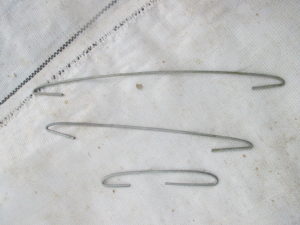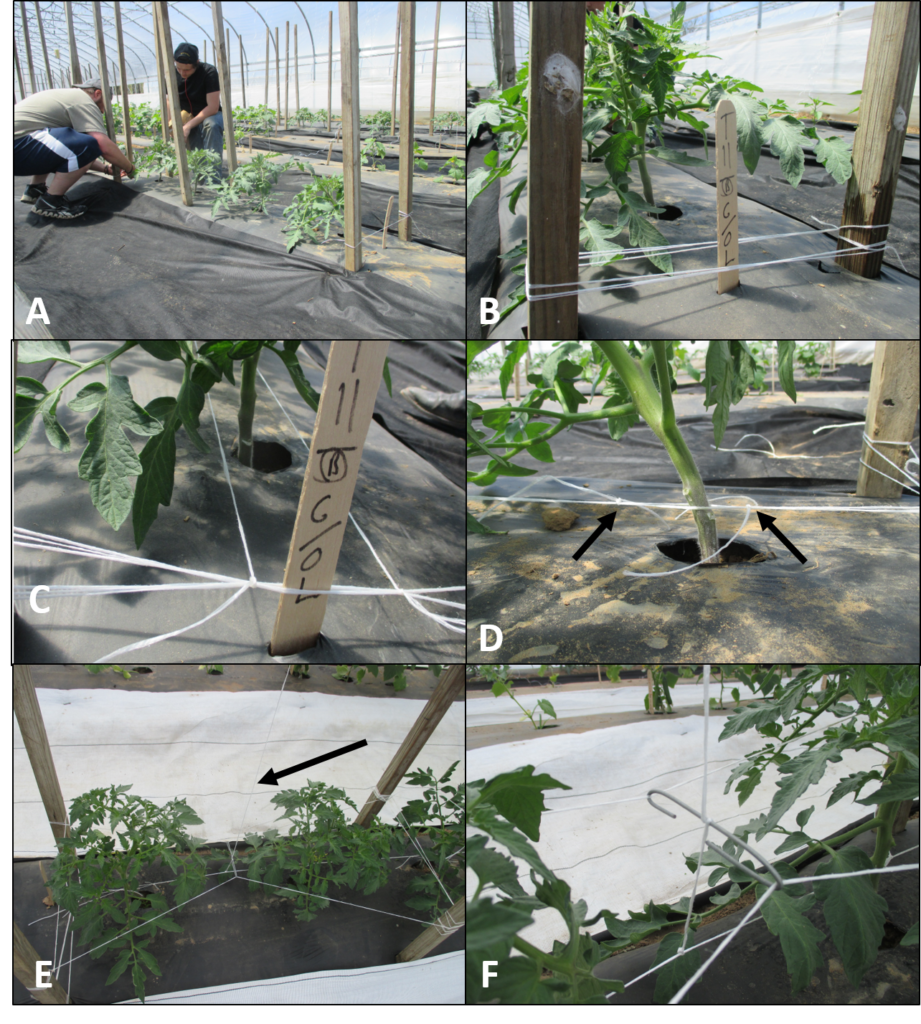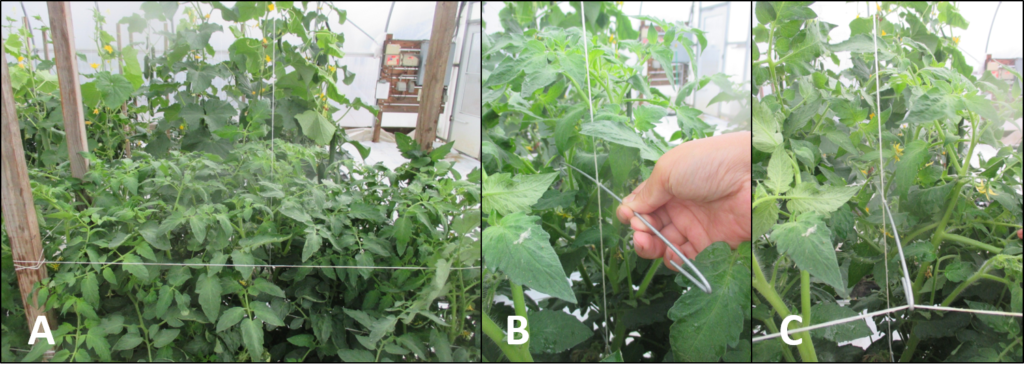The Florida-weave or sometimes called stake and weave is a commonly used tomato trellis system (Figure 1). It has several benefits and is easy to implement. However, sometimes the plants grow too tall and can hardly be supported by the stakes, or they may be too vigorous and break the strings. In this article, we will introduce an alternative tomato trellis system, Spanish-weave, and discuss its usage in tomato production.
How to trellis tomato plants with the Spanish-weave system?
- Materials: tomato stakes, tomato strings, and hooks. We made the hooks from steel wire. They were made at 4-inch, 8-inch and 12-inch length (Figure 2).
- Prune bottom leaves of the tomato plant and suckers until the first flower cluster (Figure 3).
- Install tomato stakes on each side of the rows at every two tomato plants (A); Tie strings across the two wooden stakes at the beginning and the end of each row (B); Set up string on each side of the plants along the rows (C); Tie two strings together at the sides of tomato plants (D); Set up a string from the roof trellis (arrow) and tie it with the bottom strings in the middle of every two tomato plants (E); Connect four stakes in a rectangle shape, and place a 4’’ hook between the two tomato plants (E); Cross the hook to the vertical string (F).
- Repeat the above step about every week. As plants grow bigger, using larger hooks.
Why use the Spanish-weave trellis system?
The advantage of using Spanish-weave system is to provide each plant extra above-ground space compared to the traditional Florida-weave trellis system. The Spanish-weave system allows a relatively more open plant canopy, which allows more light to reach the center of plants. Because of less competition for light among the shoots, plants tend to grow not as tall as plants trellised with the Florida-weave system.
We conducted trials last summer comparing yields of tomato plants grown with the two different pruning systems. Interestingly, we found a significant yield increase by using Spanish-weave system compared to the Florida-weave system on grafted tomato plants, but the advantage of using the Spanish-weave system was not that clear on non-grafted tomato plants.
If you have experience growing grafted tomato plants, you may have noticed that these plants tend to be more vigorous, and grow more shoots. It is more than likely that Florida-weave trellis system would limit the growth of very vigorous plants. Other factors such as varieties and fertility management may also play a role in plant vigor.
The take home message from the story is that if you expect vigorous tomato plants, for example, if you are using grafted tomatoes, you may consider the Spanish-weave trellis system, which may increase tomato yield compared to the Florida-weave trellis system. However the alternative trellis system requires more labor, since it needs twice as many stakes than the Florida-weave system needs.




